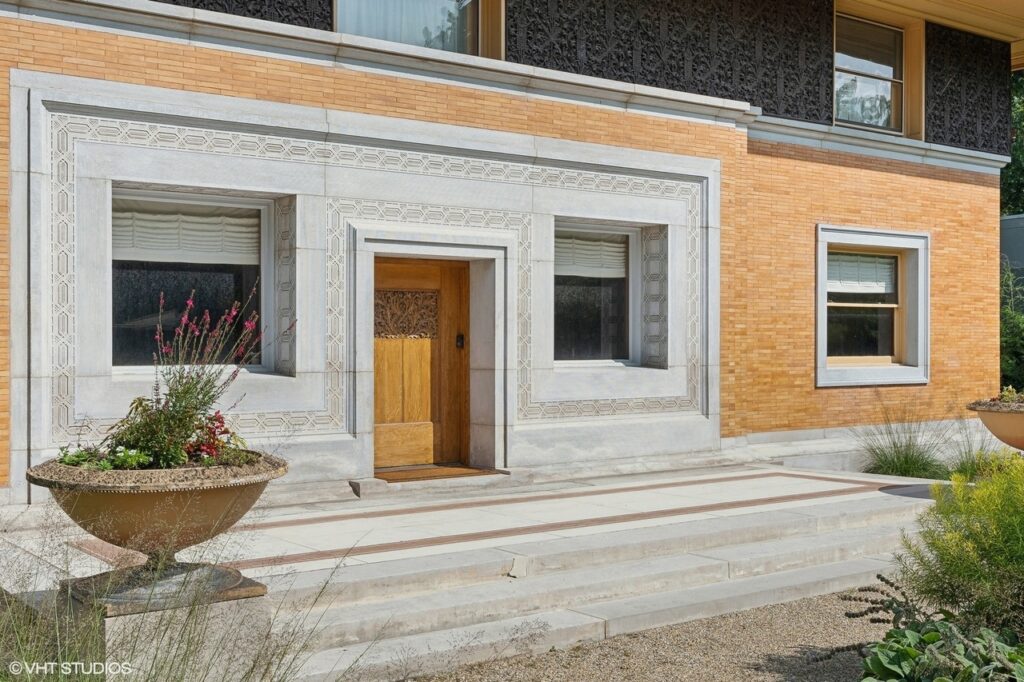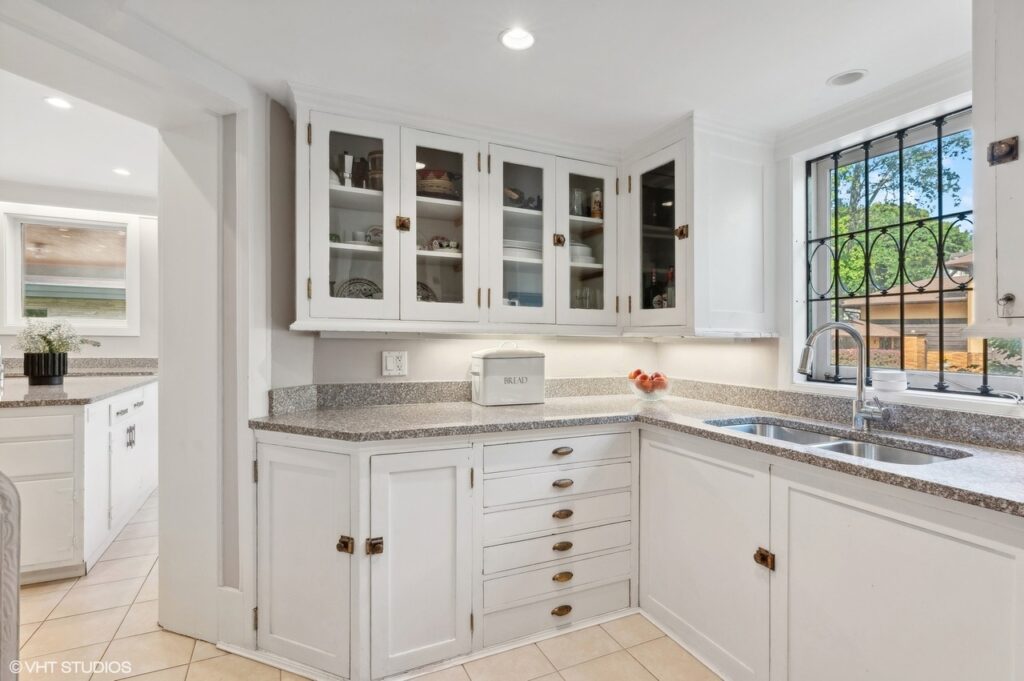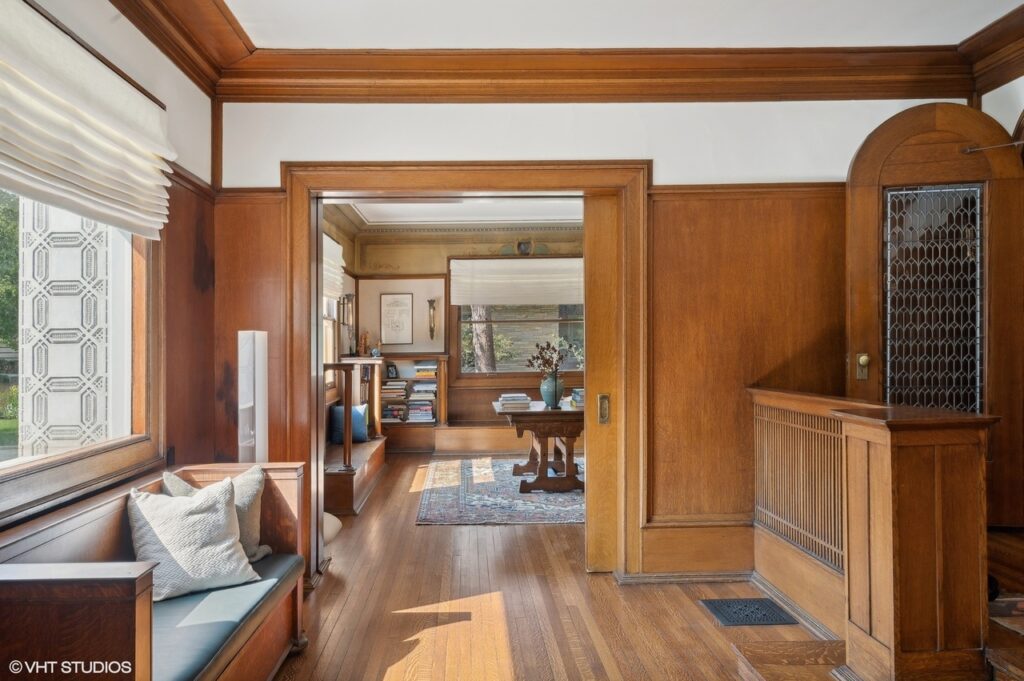Almost eight years after it last sold, one of Frank Lloyd Wright’s first independent commissions has returned to the market. The William Winslow House, located in suburban River Forest and constructed 130 years ago, is considered by many to be a precursor to Prairie Style architecture. Taken on as a philanthropic project by its current owners, who recognized the building’s significance, the nearly 5,000-square-foot home has been updated and partly restored, according to Crain’s Chicago Business. It now features new bathrooms, air conditioning, appropriate landscaping with native plants, and rebuilt architectural elements. Just today, the property was listed at just under $2 million with representation by Elizabeth August of @properties Christie’s International Real Estate.
The original homeowner, William Winslow, owned Chicago’s leading architectural manufacturing company with his brother Francis. The foundry produced ornamental iron, bronze, and other metalwork for some of the city’s landmark structures, such as the Monadnock Building and the former Carson, Pirie, Scott and Company Store. Considering Winslow previously worked with Wright’s mentor, Louis Sullivan, this may explain how the young 26-year-old architect secured the residential project. Sullivan had fired Wright the previous year, in 1893, leaving him on his own.

Wright always regarded this home as an exceptionally important design in his development as an architect, even referring to it as “the prairie house.” When reflecting on the early days of what turned out to be a 70-year career, Wright referenced the home in his autobiography: “[I] had been yearning for simplicity. A new sense of simplicity as ‘organic.’ This had barely begun to take shape in my mind when the Winslow house was planned. But now it began in practice.”
Wright also described this avant-garde design as “an attraction, far and near” that left in its wake both admirers and detractors. The groundwork for the Winslow design was first laid out four years earlier when the James Charnley House in Chicago’s Gold Coast was created by Adler & Sullivan with assistance from Wright (you can compare photos here). The designs are clearly similar, especially the outlined entrances framed by limestone with the highly ornamental entries. Inside, both structures feature arched doorways and wooden screen staircases. Sullivan-esque leafy ornamentation is present throughout the home, particularly in the recessed arcade of the main hall and the columns of the dining room. The Winslow House pays homage to Sullivan while also hinting at what lay ahead with the growth of the Prairie School.

To the average observer, the exterior of the home is striking: It features a hipped roof and sheltering eaves that extend over a plaster frieze and horizontal Roman bricks. The classically symmetrical front facade contrasts with the projecting elements at the rear that includes a curved dining room bay and an octagonal staircase tower. The property, located on two-thirds of an acre, also features a renovated two-bedroom, one-bathroom coach house with a three-car garage behind the main residence, where Winslow had a workshop to indulge one of his many hobbies. It is here that he collaborated with Wright on a limited-edition publishing venture, The House Beautiful, which was made of handmade paper using a printing press. This additional space provides plenty of flexibility, and could become either a guest house or a home office. There is now a new curving stone pathway that connects the two structures.
As visitors enter the five-bedroom residence, the dramatic fireplace inglenook flanked by two arched doors immediately draws you in. Since the property was last for sale, a band of classic friezes depicting urns and flowers that wrapped around the upper walls of the main rooms has been partially removed. Although these friezes were added in the 1920s and are not original, they remain in the living room and study as part of the residence’s rich history. Throughout the three floors of the interior, rooms are now painted in neutral colors, providing a blank canvas for the tastes of any future owner.

Another change includes the recreation of built-in benches that now provide a more defined separation from the formal dining room and rounded conservatory. The kitchen still looks the same, but could potentially be renovated to reflect a more traditional style for the time period — or turned into something completely different. Directly next to the mudroom and the outdoor porte cochere, the kitchen has a breakfast nook and pantry. All three and a half bathrooms have been remodeled, including in the primary bedroom suite, and a conveniently located laundry room has been added to the second level. At the top of the home is a large, fully finished flexible space that could be used for pretty much anything.
The current owners, who put in an estimated $1 million into the home, preserved its unique architecture while also making necessary updates. According to a recent article in Architectural Digest, they not only upgraded the electrical system but also added a tankless water heater, a whole-house generator, and smart thermostats. They do not expect to make a profit. Considering the amount of money spent on renovations, the asking price is only 44% higher than the home’s final sale price in late 2016. Instead, the couple believes it was important to bring this piece of history into the 21st century, and they hope whoever buys the property will carry on the important legacy of honoring one of the world’s most famous architects.


